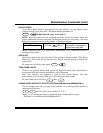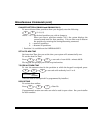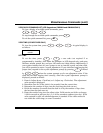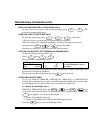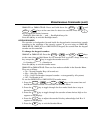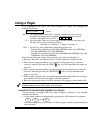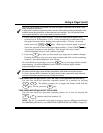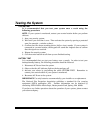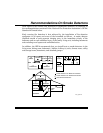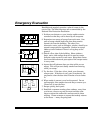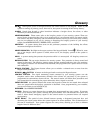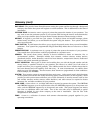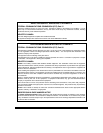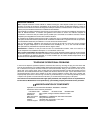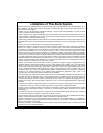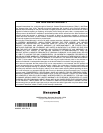
- 28 -
Glossary (cont)
EXIT DELAY: The period of time allowed between arming the system and leaving through a designated
exit/entry door before the system will register an alarm condition. This is determined at the time of
installation.
INTERIOR ZONE: An interior zone is a group of points that protect the interior of your premises. You
may want to arm the perimeter portion of your system while leaving the interior zones disarmed to
allow you to open interior doors and pass interior motion detectors without causing an alarm.
KEYPAD: A keypad is your link into your system. It displays alarm and trouble messages, shows
faulted zones, and allows you to arm/disarm the system using the buttons. Your system will have
one or more keypads.
PANIC BUTTON: A push button that allows you to signal the central station that you need immediate
assistance. Your system has programmable Keypad Send Help Alerts that can also serve as Panic
buttons.
PERIMETER ZONE: A perimeter zone is a group of points that protect the exterior of your premises.
Your outside doors and windows would be programmed as a perimeter zone.
SENSOR: The actual alarm sensor, detector or device installed to detect an intrusion, fire, or
environmental problem. Examples include: door contacts, window contacts, motion sensors,
glassbreak sensors, smoke detectors, rate-of-rise heat detectors, temperature sensors, flood/water
sensors, and carbon monoxide gas detectors.
SILENT CONDITION: Most types of alarms and troubles alert you with the keypad sounder and the
sirens, horns, or speakers located in your premises. The intent is to advise you of the alarm or
trouble and allow you to respond promptly. The audible sounds also let an intruder know that he
has been detected and will hopefully scare him away. In some circumstances, an audible alarm
might put your life in danger. For that reason, those alarms are programmed as silent conditions.
For an example, see DURESS.
SYSTEM: Your security system is composed of three main parts: 1) the control panel, which functions
as the system brain and the link to the monitoring agency (central station); 2) the keypad(s), which
provide you with system status and allow you to input commands; 3) security sensors such as door
and window contacts, motion sensors, smoke detectors, and other sensors as required to detect
intrusion, fire, and other conditions for your premises.
USER CODE: A user code is a 4- or 6-digit code that is required to operate the system. The OMNI400
and OMNI600 supports up to 15 separate user codes, the OMNI624 supports up to 32 separate user
codes, and the OMNI848 supports up to 64 separate user codes. The system supports one master
user who can add/delete other user codes. Two of the user codes may be dedicated to special
functions as defined by your alarm company at the time of installation. (See the User Code
Assignments in this manual.)
ZONE: A zone is a collection of sensors with common characteristics grouped together for your
operating convenience.



